
Service Locator
- Angler Endorsement
- Boat Towing Coverage
- Mechanical Breakdown
- Insurance Requirements in Mexico
- Agreed Hull Value
- Actual Cash Value
- Liability Only
- Insurance Payment Options
- Claims Information
- Towing Service Agreement
- Membership Plans
- Boat Show Tickets
- BoatUS Boats For Sale
- Membership Payment Options
- Consumer Affairs
- Boat Documentation Requirements
- Installation Instructions
- Shipping & Handling Information
- Contact Boat Lettering
- End User Agreement
- Frequently Asked Questions
- Vessel Documentation
- BoatUS Foundation
- Government Affairs
- Powercruisers
- Buying & Selling Advice
- Maintenance
- Tow Vehicles
- Make & Create
- Makeovers & Refitting
- Accessories
- Electronics
- Skills, Tips, Tools
- Spring Preparation
- Winterization
- Boaters’ Rights
- Environment & Clean Water
- Boat Safety
- Navigational Hazards
- Personal Safety
- Batteries & Onboard Power
- Motors, Engines, Propulsion
- Best Day on the Water
- Books & Movies
- Communication & Etiquette
- Contests & Sweepstakes
- Colleges & Tech Schools
- Food, Drink, Entertainment
- New To Boating
- Travel & Destinations
- Watersports
- Anchors & Anchoring
- Boat Handling
- ← Safety & Prevention

Modern Lightning Protection On Recreational Watercraft
Advertisement
While you can't prevent a strike, there's a lot you can do to mitigate — or even prevent — damage.
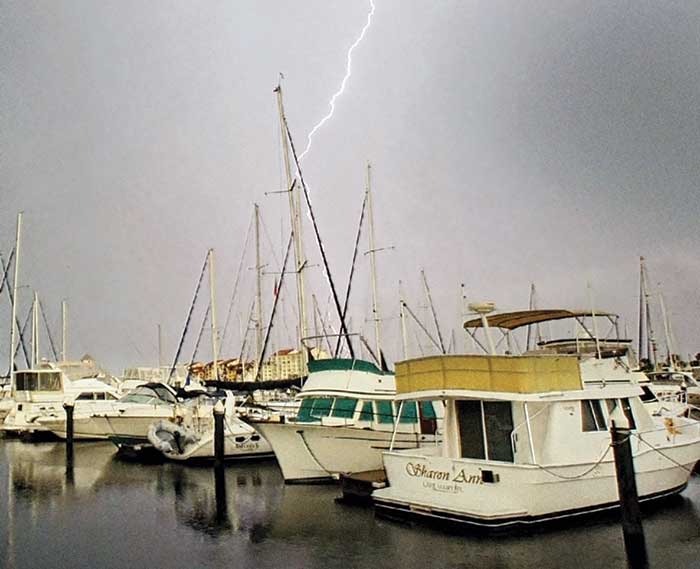
A thunderstorm passing over a marina has the potential to cause expensive damage.
The recent advances in electrical and electronic systems have revolutionized recreational boating. Vessel operations have been simplified and the boating experience enhanced due to the integration of electronics into almost every onboard system, from navigation and communications to propulsion and maneuvering. Complex engine electronics known by various names including Engine Control Unit (ECU) and Engine Control Module (ECM) have increased performance and reduced emissions on modern engines. However, these advances have come at a cost. Many 21st-century boaters depend on electronic systems to navigate and maneuver their boats, and many modern engines will not function if their electronics are compromised. That makes modern mariners and their boats vulnerable to a lightning strike that damages these now mission-critical systems, potentially leaving the boat dead in the water without navigation or communications equipment.
Unfortunately, sensitive electronics on boats have become increasingly vulnerable to lightning strikes, yet lightning-protection systems have not kept pace. It's not that there haven't been significant advances in lightning science since Benjamin Franklin developed his theories on how to protect barns and livestock. The National Fire Protection Association, Underwriters Laboratories, and industries which are significantly at risk from lightning, such as telecommunications, wind generation, aviation, and fuel, have achieved consensus on the science of lightning protection and have embraced new protocols and practices. But the recreational boating industry has been slow to adapt those changes to the marine environment. There are at least three reasons for that.
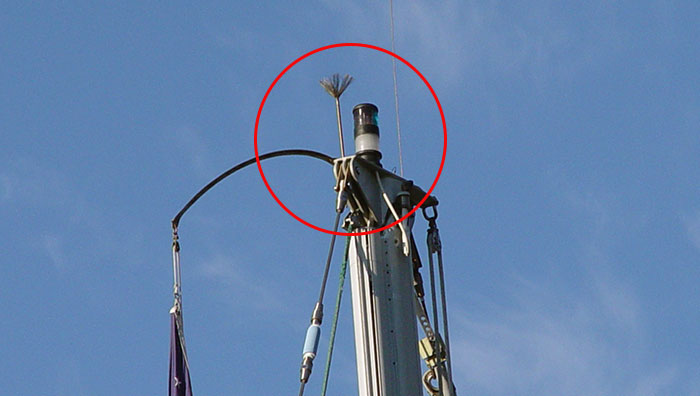
There is no evidence from independent laboratories that these fuzzy lightning dissipators prevent strikes.
First, corrosion and motion on board boats, as well as limitations with respect to weight, space, and geometry, make lightning protection more challenging than in shoreside installations. Second, the mandate of the standards body for the industry, the American Boat & Yacht Council (ABYC), focuses on protecting life; protecting equipment has been a lower priority. Third, there has been strong disagreement between professionals about the best way to mitigate damage in a lightning strike and precious little data to support one point of view over another. The sometimes-raucous debate surrounding certain unproven lightning- protection devices and such theories as "fuzzy" lightning dissipation terminals and early-streamer emission terminals, as well as unorthodox placement of grounding terminals (a.k.a. grounding plates), have sharply divided the recreational boating technical community, all of which makes consensus on lightning protection difficult, if not impossible.
This lack of guidance is frustrating for those with boats at risk. While a runabout in Portland, Oregon, or a daysailer in Portland, Maine, may have little risk of lightning damage (see " Striking Lightning Facts "), larger vessels (particularly sailboats) in such lightning-prone areas as the Chesapeake Bay or Florida absolutely should be protected using the best technology available. Any marine-insurance adjuster can attest that the potential for loss on these vessels can be great. The National Fire Protection Association made some fundamental changes to the watercraft chapter of NFPA 780: Standard for the Installation of Lightning Protection Systems in 2008 that incorporate the thinking that has become accepted in other industries. While the recommendations in NFPA 780 have yet to be embraced by the recreational boating industry as a whole, understanding what it says — and why — may assist you in developing a lightning-protection plan for your boat.
Lightning 101
The simplest way to think of a lightning strike would be as a short circuit between the cloud and the earth. The earth and an active thundercloud have either a positive or a negative polarity with respect to each other, just like battery connections that can arc if they are not separated by a long enough air gap. Whether the positive charge is in the cloud or on the water may have great importance to a physicist, but matters little to the cow in the barn or the VHF radio antenna on the mast.
The important point is that the earth (or in our case, the water) contains an unlimited supply of positive and negative charges; it is the thundercloud that induces the charge concentration in the water. For example, if a large concentration of negative charge coalesces in a storm cloud over the ocean, a large concentration of positive charge is drawn to the very top surface of the water directly beneath it. (Opposites attract.) Since air is a good insulator, no electricity will flow between the cloud and the water unless the airborne charge loses altitude, moves close enough to the surface of the water, and the lightning jumps the gap. If an electrically conductive material, such as an aluminum tuna tower or mast, stainless steel rigging, or a long vertical copper wire, comes between the cloud and the water, then the gap that must be jumped becomes shorter. The boat short circuits the voltage, much like a wrench across battery terminals.
Because boats are built from electrically conductive components installed between the water and the areas aloft (masts, rigging, antennas, towers, support structures, electrical wiring), a lightning strike is inevitable if an active thundercloud containing electrical charges passes overhead at a low enough altitude. How much damage the lightning strike does to the boat depends upon how easily the electrical energy from the strike can find its way through the boat to ground. There will be a lot less damage if the discharge is contained in a well-designed lightning-protection system than if it takes a detour through the ship's wiring and sensitive electronics on its way out of the boat.
This is a basic concept that surprises many boaters: A lightning-protection system is not designed to prevent a lightning strike, but rather to provide a safe discharge path for the lightning. This is the only viable solution for lightning protection (short of going back to wooden ships, kerosene lamps, and sextants). The technology to prevent lightning strikes does not yet exist.
Still, there are devices out there claiming to do just that. Lightning dissipaters (LDs) look like metal bottle brushes or frayed paint brushes and are installed on the top of the mast. The hypothesis is that the numerous conductive points on the LDs safely dissipate accumulated charges so the lightning strike will not occur. As far as I am aware, not a single independent testing laboratory has confirmed the effectiveness of lightning dissipaters as lightning preventers.
Early-streamer emission (ESE) terminals have also gained traction in some circles. Fancy lightning rods often shaped like a torpedo that usually come with electronic circuitry, these are supposed to attract lightning better than a standard lightning rod (also called an air terminal), to ensure that the lightning strikes the grounding path rather than what is being protected. Once again, I am not aware of any independent studies validating the effectiveness of these devices.
Lightning-protection systems actually function by acting as the "best" short circuit between the cloud and the water, one designed to lead the lightning harmlessly to ground. The system accomplishes this in two ways: by attracting lightning away from more destructive pathways between cloud and ground, and by sending the charge around, instead of through, what it is protecting.
The first concept has traditionally been known as the "cone of protection" or the area protected by an air terminal from a strike. Traditionally, the cone of protection has been thought to include a circle centered on the base of the air terminal whose radius equals the height of the terminal and to extend from the top of the air terminal to the ground at a 45 degree angle. In fact, the length of the final jump that lightning takes before striking the air terminal is about 30 meters. Recent research suggests that the actual area protected can be defined by an imaginary sphere with this radius that is "rolled" up to the air terminal. All objects inside the imaginary sphere will not be protected by the air terminal, which means the area protected often differs in size and shape from the cone of protection model. Modern lightning protection for airports and power plants use the rolling sphere method and place air terminals so that the areas of protection overlap and include any sensitive equipment that would be damaged by a strike.
The second concept will be familiar to many as the Faraday cage. As early as 1836, Michael Faraday discovered that objects surrounded by metal were protected from lightning (explaining why we are safe from lightning while in our cars). Many old-school sailors have used Faraday's discovery to good purpose when they placed sensitive electronics in the oven during a lightning storm (with the oven off, of course.) This practice can be significantly updated by placing sensitive electronics in the microwave oven!
21st Century Lightning Protection
Benjamin Franklin pioneered lightning protection in 1749 with the invention of the lightning rod, and, when it comes to recreational boats, until recently, little has changed. Under his model, the lightning is attracted to the lightning rod (air terminal), which then passes the lightning current harmlessly to a submerged metaevent secondary flashes from these metal structures.
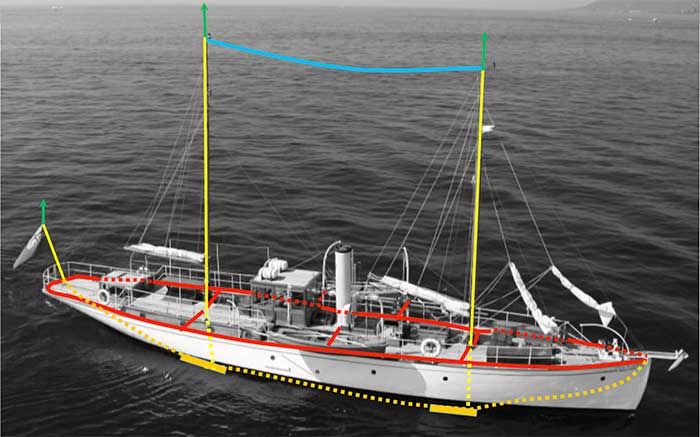
Air Terminals are shown in green; grounding plates with down, side flash, and equalization conductors in yellow; loop conductors in red; and catenary conductors in blue.
NFPA 780 draws much from the old-school system while incorporating improvements based on the modern understanding of lighting protection. While solutions will vary depending on the boat, let's talk about the basics.
Air terminals (lightning rod or Franklin rod) should be installed at the highest points of masts, towers, etc. On a sailboat a single air terminal could be bolted to the mast; on a sportfish it could be bolted to the tower and made to look like an antenna. This should be higher than anything you are trying to protect from a lightning strike, such as a VHF antenna.
A heavy electrical conductor should be connected from each air terminal directly down to a grounding point on the hull. In the case of a sailboat's mast, aluminum is a good conductor, so no separate wiring run needs to be installed. (Note that the wiring inside of the mast will be protected due to the Faraday effect.) An aluminum tower will work the same way on a sportfish so long as the legs are connected to an adequate grounding plate. Where no aluminum structure exists to act as a down conductor, a 4 AWG wire or larger should be run from the air terminal to the grounding plate in as straight a run as possible and well separated from other wiring.
The grounding point should be a corrosion-resistant metal plate installed on the exterior of the hull below the waterline. The plate should be at least one square foot in size and at least 3/16 of an inch thick. Research shows that most of the electrical discharge occurs along the edges, so a long, narrow plate, especially one with grooves cut in it, will be most effective at dispersing the charge. A new major point of contention is where to install the grounding plate, or plates. Some research indicates that a location at or near the waterline is by far the most effective solution. On a sailboat, the lead keel can be used as the grounding plate if the keel is not fiberglass-encapsulated or covered in fairing. If the mast is solidly keel stepped, there would be no need for a separate conductor from the mast to the keel. Metal rudders or propeller struts are also acceptable as grounding plates.
Protecting Electronics
Surge-protective devices (SPD) or transient voltage surge suppressors (TVSS) should be installed on all equipment that's mission critical, expensive, difficult to replace, and/or prone to lightning damage. Examples include the ECU/ECM, alarm systems, chartplotters, and instruments.
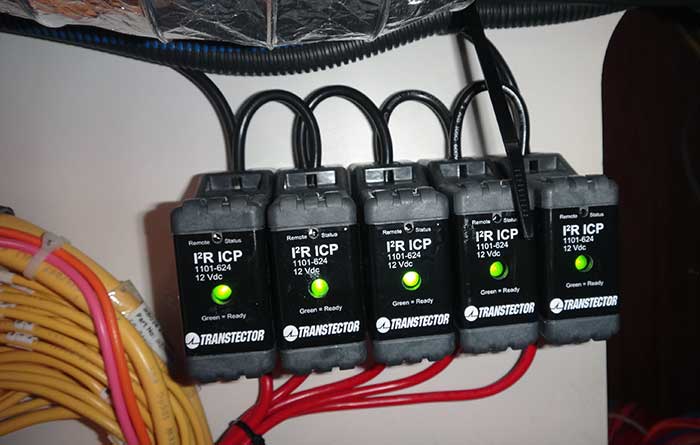
A bank of TVSSs protecting sensitive electronics.
TVSSs are the most exciting development in the field of lightning protection. These semiconductor devices provide protection by suppressing lightning-related voltage spikes. They are widely used in the telecommunications, wind generation, and avionics industries.
TVSSs are connected across the input terminals supplying voltage to a piece of equipment; they can be thought of as fuses that react to voltage instead of current. The TVSS is an open circuit as long as the supply voltage feeding the equipment is in the normal range. However, if a lightning strike causes a momentary voltage spike and puts, say 1,000 volts on a 120-volt device, the TVSS will "clamp" or short circuit 880 volts and convert it to heat. The excessive heat could, and probably would, damage the TVSS; but destroying a $250 surge arrestor to protect a $5,000 engine controller is good engineering.
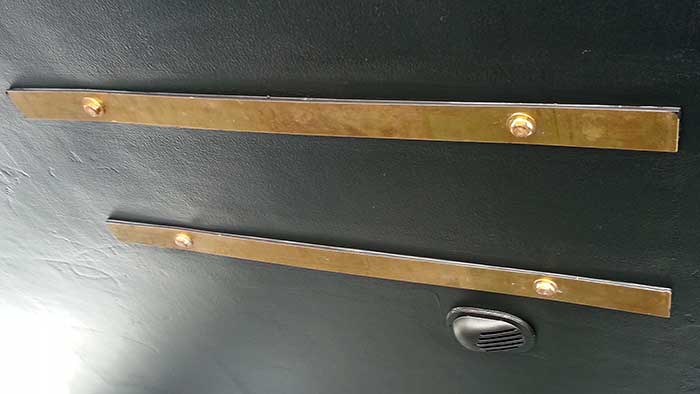
Grounding plates should be long and narrow with groves cut into them to disperse the charge more efficiently.
Voltage surge protection would be prudent for engine controls, navigation systems, steering systems, and shorepower systems. TVSSs come in many voltage ratings, energy ratings, response times, and so on. Some are designed to protect whole distribution systems, while others are suitable for individual equipment protection only. A well-designed system includes cascaded protection, with extra protection on mission-critical and lightning-prone equipment, such as main engines and shorepower systems. The key to a reliable and cost-effective system is to ensure that appropriately rated devices are specified and properly installed. The best TVSS in the world will be ineffective if it is not connected properly.
Despite the best technology, there can still be challenges with an NFPA 780-based system, particularly when the system is improperly or only partially installed. For example, if the air terminal is installed lower than an adjacent antenna, it will not protect the antenna; in that case, the antenna cable carries the lightning current. Also, if the down conductor is connected to the bonding system rather than directly to a dedicated grounding terminal (ground plate), the lightning strike can energize the entire bonding system before discharging into the water. Another common mistake is to secure the lightning down conductor to other wiring. The high current from a strike through the down conductor can result in voltage surges in these adjacent wires, leading to additional damage in equipment that would otherwise be completely unaffected by the lightning strike.
In Conclusion
The recent revolution in marine electronics demands an evolution of our thinking on marine lightning-protection; equipment protection should be an important aspect of any modern lightning protection system. The knowledge and resources to safely transform this change in thinking into reality are readily available, both from the NFPA and industries also at risk from lightning. However, there are unique challenges on pleasure craft that are not addressed by others. These must be solved by sharing the experiences of lightning-protection systems and their effectiveness across the industry.
Related Articles
The truth about ceramic coatings for boats.
Our editor investigates the marketing claims of consumer-grade ceramic coatings.
Fine-Tune Your Side Scan Fishfinder
Take your side-scanning fishfinder off auto mode, and you’ll be spotting your prey from afar in no time
DIY Boat Foam Decking
Closed-cell foam flooring helps make boating more comfortable. Here’s how to install it on your vessel
Click to explore related articles
James Coté
Contributor, BoatUS Magazine
James Coté is an electrical engineer, ABYC Master Technician, Fire Investigator and Marine Investigator. He operates a marine electric and corrosion control consulting firm located in Florida. For more information, go to: cotemarine.net
BoatUS Magazine Is A Benefit Of BoatUS Membership
Membership Benefits Include:
Subscription to the print version of BoatUS Magazine
4% back on purchases from West Marine stores or online at WestMarine.com
Discounts on fuel, transient slips, repairs and more at over 1,200 businesses
Deals on cruises, charters, car rentals, hotel stays and more…
All for only $25/year!
We use cookies to enhance your visit to our website and to improve your experience. By continuing to use our website, you’re agreeing to our cookie policy.

- Center Consoles
- Dual Consoles
- Motoryachts
- Sport Cruisers
- Tenders & Ribs
- U.S. Atlantic
- Engine Buyers Guide
- Electronics
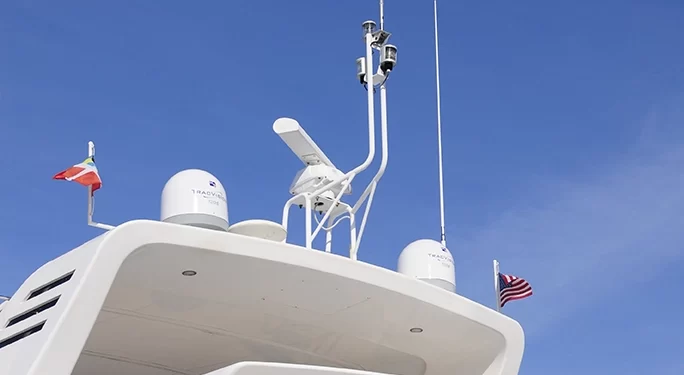
A Quick Comprehensive Guide to Lightning Protection for Boats
Understanding lightning mitigation for boats, techniques to lessen the impact of a lightning strike, adopting standardized lightning protection for boats, key components of a boat's lightning protection system: wiring, air, and ground terminals.
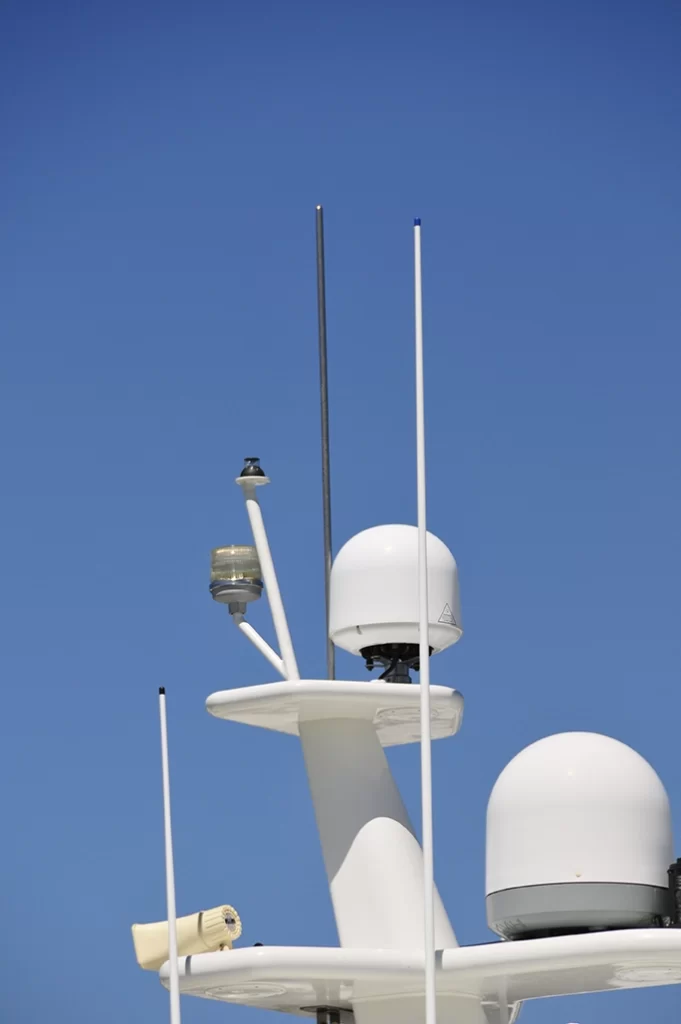
Also Read: Marine Electronics - Discover The Latest Award-Winning Products For 2023
-by steve d’antonio, fed skips, bull runs wild, hello summer after a good six months, what’s next.

Leave a Reply Cancel reply
Your email address will not be published. Required fields are marked *
Save my name, email, and website in this browser for the next time I comment.
Receive our Newsletter

Recommended
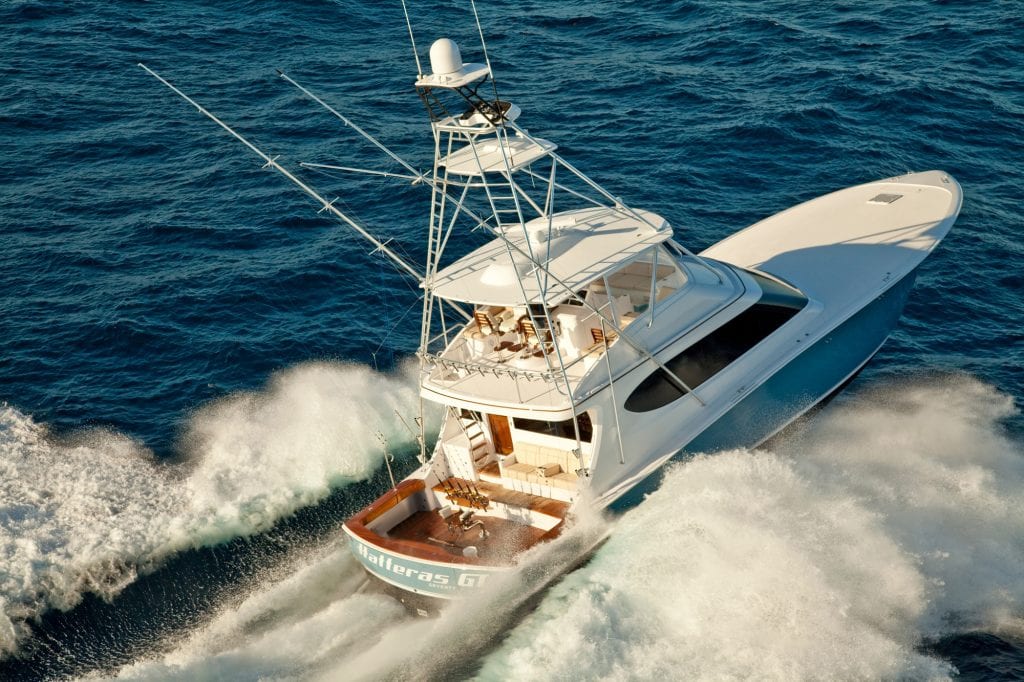
Hatteras GT 70

Investors Were Thankful Last Week After Cooling Inflation Data

Don't miss it

How To Have Effortless Repower: Electric Boat Propulsion

Experience the Best: New Center Console Boats of 2024

How To Find A Hurricane Hole Along The East Coast

Fishing Contamination Risks: What You Need To Know

Tropic Ocean Airways New Route: Palm Beach to Abaco

Fed Rhetoric Spooks The Markets Yet Technology Stocks Move Higher
- Privacy Policy

1591 E. Atlantic Blvd, 2nd Floor Pompano Beach, FL 33060 Office: +1 (954) 522-5515 Fax: +1 (954) 522-2260 Contact us: [email protected]
© 2024 Southern Boating Media
- Yachting World
- Digital Edition

Yacht lightning strikes: Why they cause so much damage and how to protect against them
- August 27, 2020
A lightning strike may sound vanishingly unlikely, but their incidence is increasing, and a hit can cause severe damage costing thousands of pounds, as well as putting an end to a sailing season, writes Suzy Carmody

Lightning strikes of boats are still fairly rare – but are on the increase. Photo: Image Reality / Alamy
Pantaenius handles more than 200 cases of lightning damage every year. “Over the past 15 years, the total number of such loss events has tripled in our statistics. The relative share of lightning damage in the total amount of losses recorded by us each year is already 10% or more in some cruising areas such as the Med, parts of the Pacific or the Caribbean,” added Pantaenius’s Jonas Ball.
Both UK and US-based insurers also report that multihulls are two to three times more likely to be struck by lightning than monohulls, due to the increased surface area and the lack of a keel causing difficulties with adequate grounding. Besides increased likelihood of being hit, the cost of a strike has also risen enormously as yachts carry more networked electronic devices and systems.

The CAPE index measures atmospheric instability and can be overlaid on windy.com forecasts
Avoiding lightning strikes
The only really preventative measure to avoid lightning is to stay away from lightning prone areas. Global maps of lightning flash rates based on data provided by NASA are useful to indicate areas of more intense lightning activity. They show that lightning is much more common in the tropics and highlight hotspots such as Florida, Cuba and Colombia in the Caribbean, tropical West Africa, and Malaysia and Singapore in south-east Asia.
Unfortunately, many of the most popular cruising grounds are located in tropical waters. Carefully monitoring the weather and being flexible to changing plans is an essential part of daily passage planning during the lightning season in high-risk areas. CAPE (Convective Available Potential Energy) is a useful tool for indicating atmospheric instability: you can check the CAPE index on windy.com (see above) as part of your lightning protection plan.
Protection against lightning strikes
Yachts that had no protection when lightning struck often experience extensive damage. The skipper of S/V Sassafras , a 1964 carvel schooner, reports: “Most of the electronics were toast. Any shielded wiring or items capable of capacitance took the most damage: isolation transformer; SSB tuner; autopilot and N2K network Cat 5 cables.”
Article continues below…

What is a Spanish Plume? Thunderstorms, lightning and downdrafts explained
Earlier this summer we saw considerable thunderstorm activity over the UK and Europe, resulting in flooding and some serious injuries.…

Expert sailing advice: How to handle a lightning strike on board
Lightning is the thing that scares me the most at sea. Having never experienced a lightning strike I think this…
The owner of Matador of Hamble , a Rival 41, recalls the effects of their strike: “The extent of the damage was not immediately obvious. For days afterwards anything with a semi-conductor went bang when we turned it on.”
The crew of Madeleine , a Catana 42S catamaran, had a similar experience. “We were struck in Tobago but only discovered the electrical damage to the port engine when we reached St Lucia and it was in the Azores that we found out the rudder post was broken and we had lost half our rudder.”
It therefore seems prudent that in lightning prone areas a protection system should be implemented where possible to protect the boat, equipment and crew. As a first step analysing the boat and the relative position of all the main metallic fittings can often reveal a few safe places to hide and places to avoid. Areas such as the base of the mast, below the steering pedestal and near the engine have the highest risk of injury.

Stays on a steel boat are attached directly to the steel hull. Photo: Wietze van der Laan / Janneke Kuysters
In terms of minimising the effect of a strike, one temporary method to limit the damage is to direct the current outside the boat using heavy electrical cables attached to the stainless steel rigging. With the other end of the cable immersed in the ocean, this provides a conductive path from the masthead to the ground.
The main flaw in this plan is that an aluminium mast has much greater electrical conductivity than stainless steel and is a more likely pathway to the ground. This system also requires adequate copper to be in contact with the seawater to discharge the current.
Other temporary measures include disconnecting radar and radio aerial cables, putting portable electronic items in the oven or microwave as a Faraday cage, turning off all the batteries or nonessential electronic equipment if at sea, or in a marina unplugging the shore power cord. All these procedures rely on someone being on board with several minutes warning before a strike to drop the cables over the side and turn off/disconnect and unplug.

Cable used as a down conductor from the shrouds on a catamaran. Photo: Wietze van der Laan / Janneke Kuysters
Posting an ‘Emergency Lightning Procedures’ card in a central location of the boat showing where to stand and what quick preparations to take is a simple first step.
Permanent lightning strike protection
In a thunderstorm, molecular movement causes a massive build up of potential energy. Once the voltage difference overcomes the resistance of the airspace in between, invisible ‘channels’ form between the base of the clouds and tall objects like masts, providing a path for a lightning strike to discharge some of the accumulated electrical energy. There will be less damage to a vessel if the discharge is contained in a well-designed lightning-protection system.
Lightning rods or air terminals installed at the top of the mast connected to an external grounding plate on the hull, via an aluminium mast, provide a permanent low impedance path for the current to enter the water. On boats with timber or carbon masts a heavy electrical cable can be used as a down conductor.
If not installed during production, a grounding plate can be retrofitted during a haul out. On monohulls a single plate near the base of the mast is adequate. A ketch, yawl or schooner requires a vertical path for each mast and a long strip under the hull between the masts, whereas catamarans usually require two grounding plates to complete the path to the water.
The current from a lightning strike is dissipated primarily from the edges of the plate, so the longer the outline the better. Warwick Tompkins installed a lightning protection system designed by Malcolm Morgan Marine in California on his Wylie 38 Flashgirl : “Two heavy copper cables run from the foot of the mast to the aluminium mast step, which was connected to a copper grounding plate on the outside of the hull via ½in diameter bronze bolts.”
The grounding plate was an eight pointed star shape. “Some liken it to a spider.” Warwick says, “And the very minimal electrical damage we experienced when struck was directly attributable to this spider setup.”

A copper ‘X’ grounding plate, used on boats that have a fin keel some distance aft of the mast. Photo: Malcolm Morgan Marine
Morgan adds: “Any cables associated with lightning protection should be routed away from other ship’s wiring wherever possible. For example, if the navstation electronics and main switchboards are on one side of the vessel, the lightning protection cables should be routed on the opposite side.”
An internal bonding circuit connects the major metal objects on a boat to the grounding plate via bonding cables. This can help prevent internal side strikes where the current jumps between objects in order to reach ground.
Morgan explains: “As modern boats are becoming increasingly complex careful consideration is required to ensure the bonding system is designed correctly. There are five possible grounding systems on a vessel (lightning protection, SSB radio ground plate, bonding for corrosion, AC safety ground, and DC negative) and all need to be joined at one common point and connected to the external grounding plate.”

This strike exited through the keel, blowing off the fairing and bottom paint. Photo: GEICO / BoatUS Marine Insurance
Surge protection
Yachts anchored close to shore or on shore power in a marina are susceptible to voltage surges during a thunderstorm. If lightning strikes a utility pole the current travels down the electricity cable looking for ground. It can enter a vessel through the shore power line or can pass through the water and flashover to a yacht at anchor.
Surge-protective devices (SPD) are self-sacrificial devices that ‘shunt’ the voltage to ground. They reduce the voltage spikes eg a 20,000V surge can be diminished to 6,000V but the additional current can still be enough to damage sensitive electronics. Therefore fitting ‘cascaded’ surge protection with several SPDs in line on critical equipment is a good idea.
High-tech solutions
Theoretically, if a lightning dissipator bleeds off an electrical charge on the rigging at the same rate as it builds up it can reduce or prevent a lightning strike. Lightning dissipators such as ‘bottle brushes’ are occasionally seen on cruising boats, though these are relatively old technology. Modern dissipators feature a 3⁄8in radius ball tip at the end of a tapered section of a copper or aluminium rod. The jury is out on their effectiveness.
A more high-tech solution is Sertec’s CMCE system, which claims to reduce the probability of a lightning strike by 99% within the protected area. The system has been widely installed on airports, stadiums, hospitals and similar, but has now been adapted for small marine use (and may reduce your insurance excess).
Arne Gründel of Sertec explains: “The CMCE system prevents a lightning strike by attracting and grounding excess negative charges from the atmosphere within the cover radius of the device. This prevents the formation of ‘streamers’, and without streamers there is no lightning strike.”

A Sertec CMCE marine unit, designed to dissipate lightning
- 1. Avoiding lightning strikes
- 2. ‘A lightning strike caused £95,000 of damage to my yacht’
- New Sailboats
- Sailboats 21-30ft
- Sailboats 31-35ft
- Sailboats 36-40ft
- Sailboats Over 40ft
- Sailboats Under 21feet
- used_sailboats
- Apps and Computer Programs
- Communications
- Fishfinders
- Handheld Electronics
- Plotters MFDS Rradar
- Wind, Speed & Depth Instruments
- Anchoring Mooring
- Running Rigging
- Sails Canvas
- Standing Rigging
- Diesel Engines
- Off Grid Energy
- Cleaning Waxing
- DIY Projects
- Repair, Tools & Materials
- Spare Parts
- Tools & Gadgets
- Cabin Comfort
- Ventilation
- Footwear Apparel
- Foul Weather Gear
- Mailport & PS Advisor
- Inside Practical Sailor Blog
- Activate My Web Access
- Reset Password
- Customer Service

- Free Newsletter

Valiant 40: Reshaping the Cruising Hull

Bristol Channel Cutter 28: Circumnavigator’s Choice

Hunter 35.5 Legend Used Boat Review

Pearson Rhodes 41/Rhodes Bounty II Used Sailboat Review


Best Crimpers and Strippers for Fixing Marine Electrical Connectors

Thinking Through a Solar Power Installation

How Does the Gulf Stream Influence our Weather?

Can You Run a Marine Air-Conditioner on Battery Power?

Practical Sailor Classic: The Load on Your Rode

Anchor Rodes for Smaller Sailboats

Ground Tackle Inspection Tips

Shoe Goo II Excels for Quick Sail Repairs
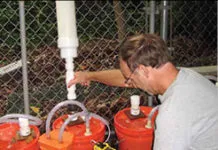
Solutions for a Stinky Holding Tank
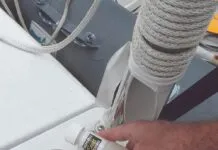
Diesel Performance Additives

What Oil Analysis Reveals About Your Engine
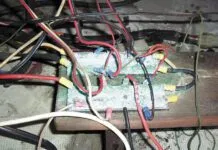
Hidden Maintenance Problems: Part 3 – Gremlins in the Electrics

Seepage or Flooding? How To Keep Water Out of the Boat
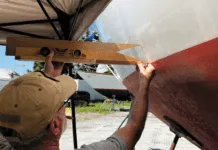
Painting a New Bootstripe Like a Pro

Three-Model BBQ Test
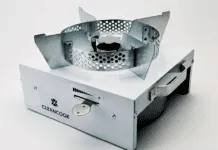
Alcohol Stoves— Swan Song or Rebirth?

Living Aboard with an Alcohol Stove

Choosing the Right Fuel for Your Alcohol Stove

Preparing Yourself for Solo Sailing

How to Select Crew for a Passage or Delivery

Preparing A Boat to Sail Solo

Re-sealing the Seams on Waterproof Fabrics

Waxing and Polishing Your Boat

Reducing Engine Room Noise

Tricks and Tips to Forming Do-it-yourself Rigging Terminals

Marine Toilet Maintenance Tips

Learning to Live with Plastic Boat Bits
- Boat Maintenance
- Systems & Propulsion
- Marine Electronics
- Safety & Seamanship
Getting the Charge Out of Lightning
No matter how well protected the boat may be, few manage to escape unscathed..
Miraculously, relatively few people are injured in lightning strikes. Frequently, of course, no one is aboard the boat when it is struck, and it is only by after-the-fact detective work that the extent of damage is discovered.
There are, however, two attendant bits of unpleasantness water, and contaminates like dirt, dust, rust, scale, bugs, and bones.
Most boat owners have only the vaguest idea of what is involved in protecting their boats from lightning damage. Many believe that their boats are already protected by the boat’s grounding system. Most are wrong.
Just because your boat may be bonded with heavy cop-per conductors connecting the masses of metal in the boat doesn’t mean that it is protected against lightning. A bon-ding system may be a part of a lightning protection system, but bonding itself offers no protection to the boat unless a good, direct path to ground is part of the system.
The purpose of bonding is to tie underwater metal masses in the boat together to reduce the possibility of galvanic corrosion caused by dissimilar metals immersed in an electrolyte. The purpose of lightning grounding is to get the massive electrical charge of a lightning strikethrough the boat to ground with the least possible amount of resistance.
Most lightning never reaches the earth: it is dispersed between clouds of different electrical potential. The lightning that concerns sailors is the discharge of electricity between a cloud and the surface of the earth, or an object on the surface of the earth, namely, your boat. The amount of electricity involved in lightning can be, well, astronomical. We’re talking about millions of volts.
Granted, the duration of a lightning strike is extremely short. But in the fraction of a second it takes for lightning to pass through your boat to ground, a great deal of damage can be done. And here’s the kicker. No matter how elaborate your lightning protection system, there is no guarantee that a lightning strike will not damage your boat.
Certainly you can reduce the potential damage from a lightning strike. That’s what protection is all about. But to think you can eliminate the possibility of damage is folly. There are too many recorded instances of so-called properly lightning-protected boats suffering damage to believe in the infallibility of lightning protection systems.
The goal of lightning protection is to offer a low resistance path to ground, in this case, the water. On a sailboat equipped with an aluminum mast and stainless steel standing rigging, the basic components of the lightning protection system are in place.
While neither aluminum nor stainless steel is an outstanding electrical conductor, the large cross-sectional area of both the mast and the rigging provide adequate conductivity for lightning protection. The trick, however, is get-ting the electricity from the mast and rigging to the water.
The straighter the path is from conductor (mast and rigging) to ground, the less likely are potentially dangerous side flashes. Put simply, side flashes are miniature lightning bolts which leap from the surface of the conductor to adjacent metal masses due to the difference in electrical potential between the charged conductor and the near by mass of metal. Ideally, therefore, the path from the bottom of the mast and rigging to ground would be absolutely vertical. In practice, this is rarely achieved.
If the boat has an external metal keel, the mast and standing rigging is frequently grounded to a keelbolt. There are pitfalls to this method. First, the connection between the bottom of the mast and rigging to the keelbolt must be highly conductive. ABYC (American Boat and Yacht Council) standards say that each primary conductor for lightning protection systems should have a resistance equal to or less than a #4 AWG copper conductor. (Secondary conductors should have resistance not greater than a #6 AWG copper conductor.)There is no drawback to using an even larger conductor.
Connecting the short conductor to the mast and keelbolt presents some problems. A crimp eye can be used on the end that is to be attached to the mast, but you may have to fabricate a larger eye for attachment to the keelbolt. This can be made from sheet copper. Soldering the connections is not recommended, since the heat generated in a lightning strike could melt the solder.
Then you have to face up to a basic problem. Your mast is aluminum, yet you’re connecting it to ground with a copper cable. Everyone knows that aluminum and copper are not galvanically compatible, so what’s the solution? While it will not eliminate corrosion, a stainless steel washer placed between the copper cable’s end fitting and the aluminum mast will at least retard it. But this connection is going to require yearly examination to make sure that a hole isn’t being eaten through the mast. In addition, of course, the process of corrosion creates wonderful aluminum oxide byproducts, which have very low conductivity. The aluminum oxide may reduce conductivity to the point where your theoretical attachment to ground is in fact non-existent. Once again, disassembling the connection and cleaning it yearly are essential to maintain conductivity. Constant attention to all the conductor connections is essential in any grounding system, whether it’s for lightning protection or grounding of the electrical system.
Even if all the connections in the system are flawless, you’re faced with getting the electrical charge out of the boat and into the water. Keels are always coated with bottom paint. Depending on the type of bottom paint used, the keel itself may be a fairly poor ground. An iron keel properly primed with epoxy mastic before bottom paint is applied is fairly well isolated from the water. If it weren’t, it would rust. The same goes for lead keels prepared in the same way. In practice, the electrical charge will probably be powerful enough to get to ground through the protection system on the keel. The same problem exists, of course, on painted metal boats with their systems of barrier coats. The barrier coats reduce conductivity, but do not eliminate it.
Do not under any circumstances ground the rigging or mast to ballast located inside a fiberglass hull shell. The electrical charge tends to travel on the surface of the conductor. Finding no path to ground from the isolated inside ballast, you may literally blow a line of holes through the hull along the top of the ballast line. Surveyors have reported occurrences of this type of damage to us, as strange as it may sound.
For boats with inside ballasting, or for powerboats, some type of external grounding plate is required. These are usually made from sintered bronze: tiny particles of bronze fused into a porous block. The effect is to give a much larger surface area than defined by the dimensions of the block itself. It is very important to use as large aground plate as necessary, and to position it as close to vertically in line with the primary lightning conductor (the mast) as possible.
Racing boats are not going to be willing to do this, since a ground plate creates a fair amount of drag in light air. Cruisers would be advised to trade off the drag for the protection offered.
A grounding plate installation is not a nail-it-in-place-and-forget-it installation. As with any bare metal underwater, oxides build up in the grounding plate, reducing its efficiency. The manufacturer of the plate can tell you the proper remedies, which may include removing the plate yearly and treating it in an acid bath to restore proper conductivity.
It is probably a poor practice to use the same grounding plate for lightning grounding and grounding of electronics such as Loran. If the lightning charge is too great for the plate to instantaneously transmit to ground, the charge may travel back through the ground wire to your electronics, with disastrous results.
For this article in its entirety please click the below link…
Getting the Charge Out of Lightning
RELATED ARTICLES MORE FROM AUTHOR

Collision Avoidance When ‘See and Avoid’ Fails
Leave a reply cancel reply.
Log in to leave a comment
Latest Videos
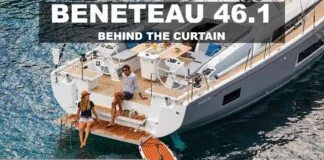
Beneteau 46.1: What You Should Know | Boat Tour

How to Clean Your Sails

C&C 40: What You Should Know | Boat Review

A Simple Solution for Boat Toilet Stink
- Privacy Policy
- Do Not Sell My Personal Information
- Online Account Activation
- Privacy Manager
An approach to a modern sailboat lightning protection system

We were lucky when we were struck by lightning on our small 35’ GRP cruising sailing boat in Turkey in 2013, but without an LPS. All the plastic and some of the metal gear at the top of the mast exploded (see photo below) and simultaneously the headlining in the saloon exploded downwards with a loud bang. So much smoke that we initially thought we were on fire; but my wife and I survived unscathed to tell the tale.
The most likely discharge exit was through the propeller shaft, but practically all electronics were violently destroyed and, as an electrical and electronic engineer, my assessment for our insurance claim afterwards showed that most devices had experienced severe arcing with small electronic components having exploded internally (see photo below).
An lightning protection system is a bonding, grounding and shielding arrangement made of four distinct parts: Air terminals, down conductors, a low-impedance ground system and sideflash protection.

The best lightning protection system cannot guarantee personal protection, or protection from damage to sensitive electronic equipment. Also it is not a lightning prevention system. I knew the private owner of one large blue water catamaran which has been struck three times in its life and it is not an old boat. Fortunately no one was hurt on any occasion, but many electronic systems on that complex boat were effected and had to be replaced on each occasion. Unfortunately catamarans are many times more likely to be struck than mono-hulls and records in the USA, where certain locations are particularly prone to electrical storms (e.g. Florida where boat ownership is high), show that mono-hull sailing boats are about 25 times more likely to be struck than motoryachts.
Lightning is very hard to study and to accurately predict its behaviour is almost impossible, but it is driven by the simple fact that a massive potential difference (voltage) exists between the highly charged clouds of a brewing thunderstorm and the surface of the Mother Earth. Eventually, a path is found through the atmosphere down to ground for some of the accumulated charge to discharge and the creation of a discharge path first requires the creation of so called ‘streamers’ [1],[2]. Bear in mind that air breaks down at 3 million Volts per metre, and you get some inkling of the enormous voltage differences involved.
In the middle of a large body of water, with your sailing yacht in it, the top of the mast, being the highest point around, looks like a handy point to discharge through. So the LPS is designed to control the first point of discharge and then make the onward path to ‘ground’ – in this case the sea – as direct as possible and capable of conducting very high currents for a very short time during the discharge.

In 2006, the American Boat and Yacht Council (ABYC) technical information report TE-4 [3], [4] recommended the following:-
• lightning protection system conductors must be straight and direct and capable of handling high currents. The main ‘down’ conductor is recommended to be 4AWG, or 25mm2 in European sizing; see diagram.
• A large enough area ground must be provided between the vessel and the water to offer an adequately low resistance path (ABYC recommends 1sq.ft. {0.1m2} in salt water; much larger in fresh water. NB this is not adequate for acting as the SSB counterpoise). Metal-hulled vessels naturally offer a large ground contact area with the sea, but the connection between the hull and all other electrical systems needs careful consideration.
• Heavy metal objects such as fuel tanks and engines must be bonded to the ground bonding arrangement to reduce the risk of ‘side flashing’ where the lightning literally can jump from one conductor to another, seemingly better path. Similarly, it can jump out of corners in cabling, so if bends must be made, then they should not be more than 90° and with as large a bend radius as possible.
The basic arrangement is as depicted in the diagram, where the ‘air terminal’ is a rounded end (circled in photo) metal wand mounted at the top of the mast to ‘attract’ lightning to it and, most importantly, to stand at least 6” (15cm) higher than anything else e.g. above the VHF or other antenna. Providing the air terminal is securely electrically bonded, presenting a high surface contact area, low resistance path to an aluminium mast, the mast itself can be used as the down conductor at least to the deck or keel, depending on where the mast is stepped. In the case of wooden, or carbon composite masts they present too high electrical resistance and a 4AWG cable must be run straight down the mast as the main down conductor. From the bottom of the aluminium mast or down conductor, the 4AWG onward path needs to be as direct and short as possible to the ground plate, or the metal hull.

It is actually better to leave through-hull metal fittings electrically isolated if they are already insulated from the rest of the boat by dint of their attached rubber or plastic hoses and their insulating mounting plates – decent quality bronze alloy seacocks and engine intake strainers will not unduly corrode if left submerged for extended periods of time without needing connecting to the vessel’s earth bonding. However, in the US it is more normal to bond everything metal below the waterline, use a tinned copper bus bar running the necessary length of the vessel, above any bilge water level, to connect each through-hull fitting to, which is then connected at one point only to the main grounding route out of the boat. This bonding arrangement is gaining in popularity outside the US with consideration of a lightning protection system.
Note in the diagram that all tie-ins, including fore- and back-stay (unless insulated) must use at least 6AWG (16mm2 European) cable. All large metal objects within 6ft (2m) of the lightning down path also need tying in with 6AWG (16mm2) cable. Examples are metal fuel tanks, main engines (despite them usually already being connected to the water via their prop shaft) and generators; this is to minimize the risk of ‘side flashing’ where lighting can literally jump from conductor to metal object, looking for a better path to ground, even if one does not exist.
In considering of the creation of a ground plate of sufficient size, a metal hulled vessel is ideal, but nevertheless only one electrical connection point to the hull should be made from the main 4AWG down conductor. This same point should have all the other earth bonding made to it alone. The DC main negative bus in turn should be connected to the earth bonding in only one place, though European boats generally have their DC system isolated from any bonding system to discourage DC earth faults, the US differs in this respect, preferring direct bonding. One solution to this dilemma is to use a suitably rated surge capacitor between the DC negative busbars and the bonding system for the LPS. In the case of a non-metal hulled sailing vessel, the attraction of using the keel as a discharge point should be resisted as it is in contact with the water some distance below the surface where already a lot is going on with respect to charge balancing, so an alternative point is likely to be sought out by the discharge, nearer the surface. It seemed clear to our very experienced (and ancient) marine insurance surveyor that, during our own strike in Turkey, the discharge was out through the propeller shaft.
So far, so good, but recent thinking and good practice [5],[6] has modified the above ideas to take into consideration the danger of side flashing much more. A side flash is an uncontrolled spark that carries current to the water and can do extensive damage to hulls and equipment. The good practice and standards for a lightning protection system relating to marine situations, such as they exist (see NFPA 780, latest version, especially chapter 8, ‘Protection for Watercraft’, [7]) are tending to treat a boat more and more like a building to exploit those well tried and tested techniques used in a land based situation. Rather than a ‘cone’ below the air terminal, the ‘zone of protection’ is now more reliably envisaged to be formed from a ‘rolling sphere’ of 30m radius, as shown below for a larger yacht [7],[8]:-

Diagram of Boat with Masts in Excess of 15 m (50 ft) Above the Water; Protection Based on Lightning Strike Distance of 30 m (100 ft).
With a large building, the down conductors from the various air terminals run down the outside of the building to a number of grounding stakes; not so with a yacht where, as we have described, we’ve now concentrated the discharge right in the middle of the boat, where the danger of side flashing into other metal parts is very real; if these parts are not bonded and protected by a properly designed, low impedance path there’s are very real further danger of the side flash finding its way onwards and out through the side of the boat to the surrounding water surface. This has indeed been experienced by an American friend of mine on a high-tech, all carbon racing sailing boat on its way back to Newport, which after being unavoidably struck several times in a violent storm, put in to New York and immediately hauled to find literally a thousand or more tiny holes around the waterline when the discharge had exited! Apparently lightning does not always take the straightest path to the water, but rather has an affinity for the waterline.
The latest version of this NFPA 780 standard recognises this danger and, in a departure from the older versions, provides for multiple grounding terminals to provide the shortest path to the surrounding water surface. These ‘supplemental grounding electrodes’ conduct lightning current into the water in addition to that conducted by a main ground plate. The new standard provides for a continuous conducting loop outboard of crewed areas, wiring and electronics. Placing the loop conductor well above the waterline, outboard, and with grounding terminals below it retains the advantages of an equalization bus, whilst correcting for its weakness with side flashes having nowhere else otherwise to go.

Protection of electronic equipment by a hermetic system on larger yachts
So much electronic equipment on board a yacht struck by lightning is very susceptible to permanent damage. The only safe way to fully protect electronic equipment is to have it completely disconnected from all other circuits when thunder and lightning are nearby, and I still to this day do that as much as possible, but how practical is complete protection really?
A recent idea I had whilst discussing the problem with a 30m ketch owner may have some merit, and I call it a ‘hermetic system’, so suggesting that it is sealed from the outside world: If the most critical and/or sensitive electronic equipment can be enclosed within its own quite separate power and cabling set, separate from the rest of the boat’s electrical and electronic wiring, then it is possible that it could be saved in the event of a lightning strike. One way to do this would be to run all those systems required to be protected effectively off an Uninterruptable Power Supply (UPS), powered from the AC bus (via the generator), then down converted to the necessary 24/12VDC electronics supply. In the event of a lightning storm, all AC connections to the UPS and any signals, power or ground returns outside the hermetic system must be open circuited by large clearance contactors. The electronics contained within the hermetic system can still continue to operate, for a limited time (depending on the capacity of the UPS batteries) and further choices can be made about what to shut down within the hermetic system to extend the battery life, leaving for example just the absolute minimum electronics to continue to safely navigate e.g. Depth, GPS, Chartplotter. Very careful consideration must be given to cable runs.
The VHF antenna on the main mast may be protected by a surge arrestor from one of several suppliers e.g. www.nexteklightning.com. No guarantee is likely to the effectiveness of this as a protection device in all cases of lightning strike and the manufacturers should be consulted for further information.
I certainly now resort to the marvel of a GPS chart plotter on my mobile phone when there’s a nasty electrical storm about and I’m out at sea! References: –
1. Top 10 best lightning strikes (USA) by Pecos Hank, with rare photo of an upward streamer. 2. http://marinelightning.com/index_files/SFMechanism.gif for a graphic showing the formation of negative streamers 3. ABYC (US) technical report TP-4 “Lightning Protection”. 4. Nigel Calder – “Boatowner’s Mechanical and Electrical Manual: How to Maintain, Repair, and Improve Your Boat’s Essential Systems” 5. “Complexities of Marine Lightning Protection”, By Ron Brewer, EMC/ESD Consultant, April 2011 6. “A New Concept for Lightning Protection of Boats – Protect a Boat like a Building” Ewen M. Thomson, Ph.D.; published in the October 2007 edition of Exchange 7. National Fire Protection Association (US) document NFPA 780-2014 “Standard for the Installation of Lightning Protection Systems” – see especially chapter 8 ‘Protection for Water craft’. 8. “Evaluation of Rolling Sphere Method Using Leader Potential Concept – A Case Study” P.Y. Okyere, Ph.D & *George Eduful – Proceedings of The 2006 IJME – INTERTECH Conference
Feature article written by Andy Ridyard. Andy Ridyard has been a professional electrical and electronics engineer for more than 35 years and started SeaSystems in 2008. His business is dedicated to providing troubleshooting, repair and installation services to superyachts internationally, specialising in controls and instrumentation. He lives with his wife in Falmouth, UK, but works mostly in the Mediterranean. SeaSystems has fixed countless intractable problems with marine control systems, marine electronics, Programmable Logic Controllers (PLCs) and marine electrical systems. For more information visit SeaSystems.biz .
Instagram Posts from the IIMS @iimsmarine
- Privacy Overview
- Strictly Necessary Cookies
- Performance & Marketing Cookies

This website uses cookies so that we can provide you with the best user experience possible. Cookie information is stored in your browser and performs functions such as recognising you when you return to our website and helping our team to understand which sections of the website you find most interesting and useful.
Strictly Necessary Cookie should be enabled at all times so that we can save your preferences for cookie settings.
This website uses Google Analytics to collect anonymous information such as the number of visitors to the site, and the most popular pages. This also helps us optimise our marketing campaigns. User data sent to Google Analytics may be used for ad personalization and measurement of our ad campaigns. Keeping this cookie enabled helps us to improve our website.
Please enable Strictly Necessary Cookies first so that we can save your preferences!

IMAGES
VIDEO
COMMENTS
While a runabout in Portland, Oregon, or a daysailer in Portland, Maine, may have little risk of lightning damage (see "Striking Lightning Facts"), larger vessels (particularly sailboats) in such lightning-prone areas as the Chesapeake Bay or Florida absolutely should be protected using the best technology available.
What should you do to protect your boat from lightning? The best advice available today is to follow the practices recommended by the ABYC for both lightning protection and grounding. Installation of a good lightning protection system wont hurt.
Key Components of a Boat's Lightning Protection System: Wiring, Air, and Ground Terminals Bonding systems are typically designed to prevent corrosion, however, when used in conjunction and compliant with a lightning protection system, they can improve safety and reduce damage.
A lightning strike may sound vanishingly unlikely, but their incidence is increasing, and a hit can cause severe damage costing thousands of pounds, as well as putting an end to a sailing...
Not surprisingly, sailboats are more likely to get hit by lightning than power boats. According to data, sailboats generally have a 155% greater chance of being strike by lightning than powerboats (40 out of 10,000 for sailboats, as opposed to 5 out of 10,000 for powerboats).
The goal of lightning protection is to offer a low resistance path to ground, in this case, the water. On a sailboat equipped with an aluminum mast and stainless steel standing rigging, the basic components of the lightning protection system are in place.
An lightning protection system is a bonding, grounding and shielding arrangement made of four distinct parts: Air terminals, down conductors, a low-impedance ground system and sideflash protection. The best lightning protection system cannot guarantee personal protection, or protection from damage to sensitive electronic equipment.
11.3K subscribers. Videos. About. We install a lightning protection system from Marine Lightning Protection Inc on a Nicholson 31 sailboat. Components:6 pieces hull Sidearcs - $160 each1...